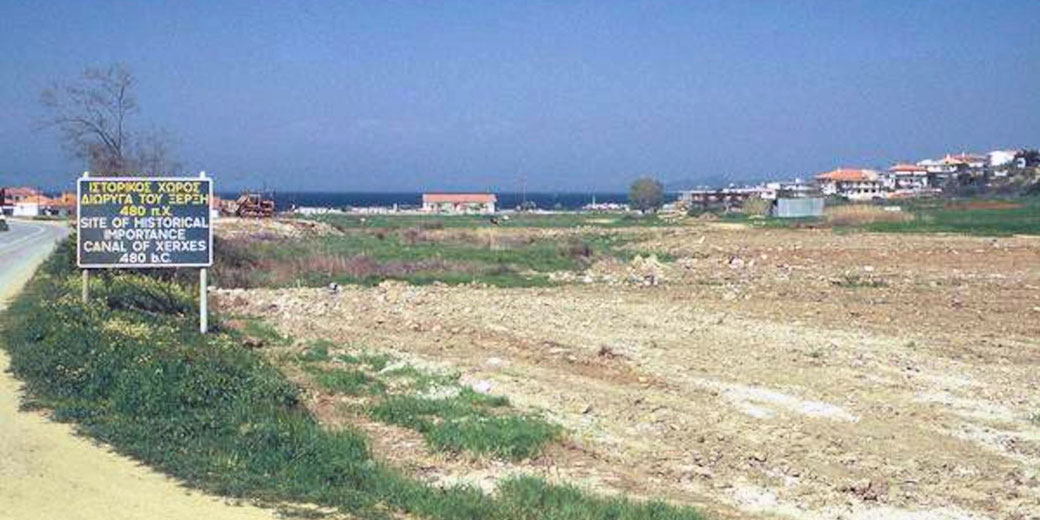How the Persian King Xerxes carved a massive channel across ancient Greece

The Achaemenid Persian Empire was able to command an incredible arry of resources and coordinate large populations to create some of the most amazing construction projects of the ancien world.
One of the clear examples was the waterway they excavated across the Athos peninsula in preparation for Xerxes I’s invasion of Greece in 480 BC.
The peninsula’s steep cliffs and unpredictable winds made it a particularly difficult region to achieve such a monumental engineering project.
Even so, it was almost entirely lost to history until a lucky discovery in the 20th century.
Why Xerxes built a canal across Mount Athos
Xerxes I, who ruled from 486 to 465 BC, had assembled a large army and a fleet that Herodotus claimed numbered 1,200 warships (though modern estimates are significantly lower) and he planned to link their movements through a combination of boat bridges and supply depots.
His aim was to avoid the naval disaster that had occurred during his father Darius I’s campaign when Persian ships were wrecked off the dangerous coast of Mount Athos in 492 BC.
The planned canal cut across the Athos peninsula in northern Greece, which provided a safer and faster route for the Persian fleet as it moved south to support Xerxes’ land forces.
Construction lasted for roughly three years and required a massive workforce drawn from across the Persian Empire.
Ancient sources such as Herodotus describe labourers from different subject peoples, including Egyptians, Phoenicians, and Greeks from Ionian cities under Persian control.
Scholars believe that tens of thousands of men used picks, wooden shovels, and wicker baskets to remove the earth, and engineers divided them into ethnic contingents that excavated separate sections.
Herodotus recorded that the Phoenicians, who were known for their maritime skill completed their section with the utmost skill because they dug their trench with sloping sides to prevent collapses.
When completed, the canal measured about 2 kilometres in length and 30 metres in width, and it was likely 7 to 10 metres deep to accommodate triremes.
The width may have allowed two ships to pass, but it remains uncertain how practical such manoeuvres would have been in a narrow channel.
The canal fulfilled its immediate military purpose during Xerxes’ invasion of Greece.
The Persian fleet successfully navigated the channel as it sailed south to join the land army, which had separately crossed the Hellespont by boat bridges.
The invasion ultimately failed after defeats at Salamis in 480 BC and Plataea in 479 BC.
Later Greek authors such as Plutarch and Thucydides described the canal as an example of Persian hubris, yet modern historians regard it as some of the best evidence of Persian state power.
It likely silted up soon after the invasion and fell out of use.
Is there archaeological evidence of Xerxes canal?
Evidence for the canal’s existence has been confirmed by modern archaeological studies.
In the 1990s and early 2000s, researchers from the University of Thessaloniki and other institutions used photographs taken from the air, field studies, satellite imagery, and ground testing methods to trace the canal’s route across the peninsula.
Their findings showed that the Persians excavated an unbroken channel whose traces still match the descriptions given by Herodotus almost 2,500 years ago.
Today, the site continues to attract archaeological interest even though most tourists are unaware of its existence.
What do you need help with?
Download ready-to-use digital learning resources
Copyright © History Skills 2014-2025.
Contact via email
With the exception of links to external sites, some historical sources and extracts from specific publications, all content on this website is copyrighted by History Skills. This content may not be copied, republished or redistributed without written permission from the website creator. Please use the Contact page to obtain relevant permission.





